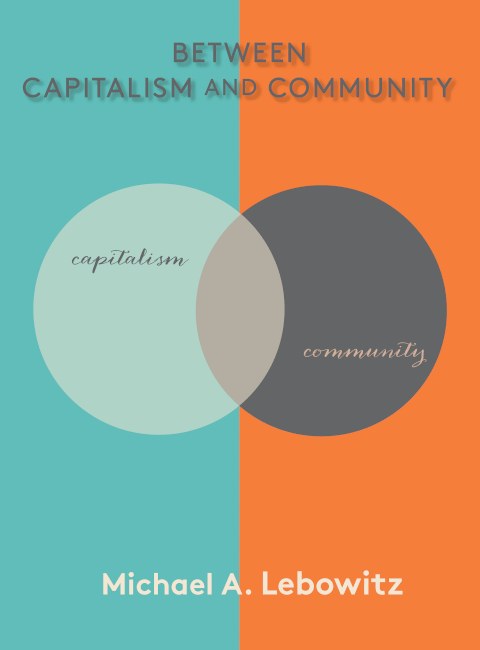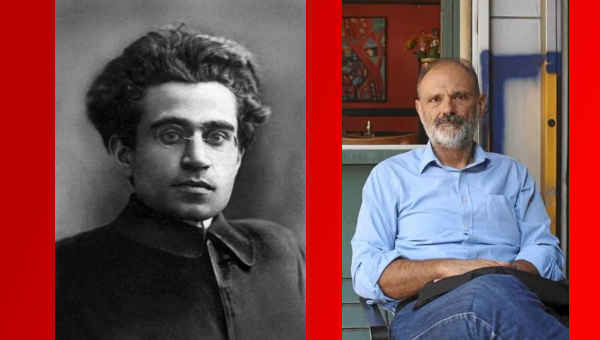Slave or Protagonist? The Worker in Capital
Think of the worker in Marx’s Capital. He sells his capacity to work as a commodity to the capitalist. In the relation of “supremacy and subordination” of capital over wage-labourers that results from this transaction, the capitalist is able to gain absolute surplus value by lengthening and intensifying the workday as well as relative surplus value by increasing the proportion of the workday that accrues to the capitalist.1 The latter is possible because the value of labour-power is “determined, as in the case of every other commodity, by the labour-time necessary for the production, and consequently also the reproduction, of this specific article,” and this falls with increases in productivity in the production of the use-values that enter into the standard of necessity of the worker.2
But what is that standard of necessity that determines the value of labour-power? It “can be resolved,” Marx proposed, “into the value of a definite quantity of the means of subsistence,” and we assume that set of use-values to be constant: “the quantity of the means of subsistence required is given at any particular epoch in any particular society and can therefore be treated as a constant magnitude.”3
There is, however, a bit of a problem with this treatment of labour-power as a commodity like every other. The worker is not paid for this sale with a given and determinate set of use-values.4 Rather, he is paid with money which he uses to purchase commodities. This understanding of money as the intermediary between commodities distinguishes the worker under capitalism from the slave. The slave, Marx explained in the “Results of the Immediate Process of Production,” receives the means of subsistence he requires “which are fixed both in kind and quantity – i.e. he receives use-value.” But that is not true for the wage-labourer. In contrast to the slave, the wage-labourer receives money to purchase means of subsistence, and “it is the worker himself who converts the money into whatever use-values he desires; it is he who buys commodities as he wishes and, as the owner of money, as the buyer of goods, he stands in precisely the same relationship to the sellers of goods as any other buyer.”5 Rather than the product of a fixed set of use-values, the wage-labourer here appears as a subject with money who decides upon its disposition.
Relative Surplus Value?
However, once we distinguish the worker from the slave in this manner, it must affect our understanding of the generation of relative surplus value. The increase in productivity lowers the value of the means of subsistence but, all other things equal, this expands what the worker can purchase with his money. In contrast to the slave, who is not the beneficiary of productivity increase, the immediate effect of productivity increases is not relative surplus value but rising real wages for the worker! Only the imposed assumption of “a definite quantity of the means of subsistence” ensures that the capitalist rather than the worker gains from increased productivity.
By thus following classical political economy in treating the cost of production of the worker as given and fixed, Marx’s discussion of relative surplus value leapfrogs over money and leaves the value of labour-power a mere footnote to the value of means of subsistence. Unlike classical political economy for whom money was a mere veil, however, Marx understood the importance of money. Accordingly, he pointed out that the suggestion of a fixed standard of necessity is “mere illusion. If means of subsistence were cheaper or money-wages higher, the workers would buy more of them.”6 Under these conditions, “the demand of the workers for necessary means of subsistence will grow. Their demand for luxury articles will increase to a smaller degree, or else a demand will arise for articles that previously did not enter the area of their consumption.”7 In short, the higher that money-wages are relative to money-prices, the more that workers “can extend the circle of their enjoyments, make additions to their consumption fund of clothes, furniture, etc., and lay by a small reserve fund of money” and the more the worker is able to participate in “higher, even cultural satisfactions, … widening the sphere of his pleasures” and gaining “his only share of civilization which distinguishes him from the slave.”8
However, if the fall in the value of subsistence goods benefits workers, how does the capitalist derive relative surplus value? Answer: by driving down money-wages as much as possible. Given that “the workers’ power of resistance declines with their dispersal,” the condition for that is the separation of workers.9 As the General Council of the First International declared, “What the lot of the labouring population would be if everything were left to isolated, individual bargaining, may be easily foreseen. The iron rule of supply and demand, if left unchecked, would speedily reduce the producers of all wealth to a starvation level…”10 The reasoning was quite clear: competition between workers “allows the capitalist to force down the price of labour”; it brings with it as well an increase in the length and intensity of the workday of employed workers, forcing them “to submit to overwork.”11
Aiding that “iron rule of supply and demand” to function is precisely the goal of the capitalist. As Marx noted in Value, Price and Profit, “the capitalist [is] constantly tending to reduce wages to their physical minimum, and to extend the working day to its physical maximum.” To achieve that, he is constantly tending to ensure the atomization and separation of workers. However, that passage continued, “while the working man constantly presses in the opposite direction.”12 For that, the worker must constantly attempt to reduce the degree of separation among workers – in short, to organize workers to act in common against the capitalist and thereby to infringe “the ‘eternal’ and so to speak ‘sacred’ law of supply and demand.”13
The Worker as Protagonist
Let us consider, then, the side of the worker, the worker as protagonist. The starting point is to understand the centrality of practice for Marx. Building upon Hegel’s “outstanding achievement” in conceiving “the self-creation of man as a process” and thus understanding “real man – as the outcome of man’s own labour,” Marx followed this thread of “labour as man’s act of self-genesis” by insisting upon the key link of human development and practice: “the coincidence of the changing of circumstances and of human activity or self-change can be conceived and rationally understood only as revolutionary practice.”14
Every activity thus yields two products: the change in circumstance and the human product.15 We can see in Capital the second product that results from work under capitalist relations: fragmented, deformed human beings alienated from “the intellectual potentialities of the labour process” and who have lost “every atom of freedom, both in bodily and in intellectual activity.”16 In contrast to this destruction of existing (and potential) capacities, Marx describes how under relations of associated producers, rather than the crippling of workers, workers develop their capacities: “when the worker co-operates in a planned way with others, he strips off the fetters of his individuality, and develops the capabilities of his species.”17
The key link of human development and practice points to another product within capitalism: through their struggles, workers change themselves and make themselves fit to create a new world. Thus, Marx’s message to workers in 1850 was that “you will have to go through 15, 20, 50 years of civil wars and national struggles not only to bring about a change in society but also to change yourselves, and prepare yourselves for the exercise of political power.”18 Over two decades later (after the defeat of the Paris Commune), he continued to stress the inseparability of human activity and self-change: the working class knows that “they will have to pass through long struggles, through a series of historic processes, transforming circumstances and men.”19
Struggle, in short, is a process of production – one in which workers produce themselves differently. So, where do we find this in Capital? We don’t find this in struggles over wages. That’s precluded – given Marx’s theoretical assumption of a fixed and determinate standard of necessity. Significantly, we do see outside of Capital what Marx thought about workers who don’t struggle. Wage struggles, he argued in 1853, are the “indispensable means of holding up the spirit of the labouring classes, of combining them into one great association against the encroachments of the ruling class, and of preventing them from becoming apathetic, thoughtless, more or less well-fed instruments of production.” In their absence, he predicted, the working class “would be a heart-broken, a weakminded, a worn-out, unresisting mass.”20 And, he made the same point in 1865: workers who do not struggle over wages are “degraded to one level mass of broken wretches past salvation.” They thereby “disqualify themselves for the initiating of any larger movement.”21
Consider apathetic workers who do not struggle. They are the premise and result of capitalist production and accordingly look upon capital’s logic as common sense. As Marx described that product in Capital:
“The advance of capitalist production develops a working class which by education, tradition and habit looks upon the requirements of that mode of production as self-evident natural laws. The organization of the capitalist process of production, once it is fully developed, breaks down all resistance.”22
To this, Marx added that capital’s generation of a reserve army of the unemployed “sets the seal on the domination of the capitalist over the worker.” The separation of workers produced by the generation of a relative surplus population of workers means, he argued, that wages are “confined within limits satisfactory to capitalist exploitation, and lastly, the social dependence of the worker on the capitalist, which is indispensable, is secured.”23 Accordingly, Marx concluded that the capitalist can rely upon the worker’s “dependence on capital, which springs from the conditions of production themselves, and is guaranteed in perpetuity by them.”24
Those apathetic, slave-like, thoughtless, more or less well-fed instruments of production who are the products of capital ensure the reproduction of capitalism “in perpetuity.” But there is an important exception to this picture in Capital – one in which Marx shows the worker as engaged in “self-genesis”! Chapter 10’s account of the struggle over the workday introduces the worker as protagonist. “Suddenly,” Marx announces, “there arises the voice of the worker, which had previously been stifled in the sound and fury of the production process.” The worker answers the capitalist’s lust for an extended workday by demanding “a normal working day.” And, suddenly, we do see that, in addition to the right of the capitalist, there is also the right of the worker, and that “between equal rights, force decides.”25
In Chapter 10, Marx described how English workers developed as a class in their struggles against capital’s drive for absolute surplus value. We see there “the daily more threatening advance of the working-class movement,” how workers moved from “passive, though inflexible and unceasing” resistance to begin open class protest; we see their growing “power of attack” and how a “long class struggle” shaped the new factory legislation. Indeed, Marx concluded that “the establishment of a normal workday is therefore the product of a protracted and more or less concealed civil war between the capitalist class and the working class.”26
No one has described better the intrinsic link between the struggles of workers in common and their self-change better than Friedrich Engels. Even though they had lost the battle over the Ten Hours’ Bill, he argued that workers changed significantly in the course of that struggle:
“The working classes, in this agitation, found a mighty means to get acquainted with each other, to come to a knowledge of their social position and interests, to organize themselves and to know their strength. The working man, who has passed through such an agitation, is no longer the same as he was before; and the whole working class, after passing through it, is a hundred times stronger, more enlightened, and better organized than it was at the outset.”27
The second product of such struggle is that workers are no longer the same as they were before. They are “stronger, more enlightened, and better organized.” They learn in the process of struggle. The struggle over the workday, Marx noted in Chapter 10, proved “conclusively that the isolated worker, the worker as ‘free’ seller of his labour-power, succumbs without resistance once capitalist production has reached a certain stage of maturity.” Accordingly, workers learn that they must struggle against separation and isolation; they must transform their relations and themselves if they are to make any gains in the protracted “civil war between the capitalist class and the working class.”28
However, capital also learns a lesson from the protagonism of workers; it learns the need to consciously separate and atomize the working class if it is to secure surplus value. In the “struggle between collective capital and collective labour, i.e., the class of capitalists, and collective labour, i.e., the working class,” capital actively searches for ways to prevent workers from acting in common. And, how better than to foster differences (real and imagined) such as race, ethnicity, nation, and gender and to convert difference into antagonism? Marx certainly understood how capital thrives upon divisions within the working class. That, he declared, is the “secret” of capital’s rule. Describing the antagonism between English and Irish workers at the time, Marx explained that its is “the secret of the English working class’s impotence despite its organization. It is the secret of the maintenance of power by the capitalist class. And the latter is fully aware of this.”29
Divide, divide the working class! Capital knows well the importance of separating workers.. However, because Capital presents the worker as akin to a slave with a fixed and determinate standard of necessity, we only read about capital’s “immanent drive, and a constant tendency” to increase the productivity of labour “in order to cheapen commodities and, by cheapening commodities, to cheapen the worker himself.”30 We learn nothing about capital’s immanent drive and constant tendency to divide workers. And, what happens when this side of the logic of capital is missing?
If you do not understand the centrality of capital’s need to divide and disperse workers, you do not understand the enemy. You do not grasp that such characteristics as racism, patriarchy, and xenophobia do not drop from the sky. On the contrary, they are produced and reproduced within a capitalism that must divide the working class if it is to be reproduced. Silence about the secret by which the capitalist class maintains its power disarms the working class and, indeed, betrays it. Stressing the link between race and gender oppression and the logic of capital, David Roediger correctly argues that “Marx left the production of difference untheorized in a way that we cannot afford to.”31
There is more, however. Once we recognize explicitly capital’s need to divide and separate workers as central to its logic, we can no longer view the productive forces that capital introduces as neutral. Those productive forces do not drop from the sky; they are particular to capitalist relations of production – i.e., to the necessity to reproduce the supremacy and subordination of capital over workers. Marx understood that within the capitalist system, “all means for the development of production undergo a dialectical inversion so that they become means of domination and exploitation of the producers.” He certainly did not view as neutral productive forces which degrade the worker “to the level of an appendage of a machine.”32
Class Struggle Between the Capitalist Class and the Working Class
On the one side, capitalists attempt to drive down wages and extend and intensify the workday, achieving that by dividing workers. On the other side, workers press in the opposite direction – pushing to increase wages, reduce the length and intensity of the workday and doing so by building unity among workers. That is how the struggle between the capitalist class and the working class is typically presented. But that’s only one side of this struggle. The second product is contested. Insofar as capital is successful, it reproduces workers for whom the requirements of capitalism are “self-evident natural laws,” workers who ensure the reproduction of capitalism in perpetuity. And, insofar as workers struggle against capital, they change. The worker is “is no longer the same as he was before,” he develops a new capacity as the result of his activity.
Building the capacities of the working class is essential if we are to put an end to capitalism. Those capacities are developed through what Lucien Sève called “an enormous accumulation of the most varied acts through time.” In short, collective acts as protagonists are acts of self-genesis and produce a stock upon which workers may draw, “the ensemble of actual potentialities, innate or acquired, to carry out any act whatever and whatever its level.”33
Is it only, though, through direct struggle against capital that the working class develops the capacities, solidarity and trust that can strengthen it? Every process in which people struggle collectively challenges capital’s production of apathetic, broken wretches past salvation. Whether it is struggles against racism, patriarchy, fascism, the crisis of the earth system, for immigrant rights or acting in common at the local level (such as initiatives to support tenant rights, free public transit, public and co-op housing, increasing city-wide minimum wages and building community gardens), those who struggle are no longer as they were before; they develop a sense of the need for solidarity, trust and community that goes beyond the atomism and isolation upon which capital depends. Protagonism, introduced in Capital only in Chapter 10’s discussion of the struggle over the workday, builds an alternative to capitalism.
When workers struggle against various aspect of life under capitalism, they develop capacities and solidarity among those in struggle; however, they do not spontaneously generate links between struggles. There is a “paradox of protagonism” – a spontaneous tendency for increased solidarity within a given group to be accompanied by increased separation from those outside. Because every struggle in common occurs in the context of the atomism and separation produced by capitalism, the immediate result of activity may be the development of collective atomism.34 Even when the periodic crises generated by capitalism produce demands for relief, to rely upon spontaneity is to surrender the terrain to capitalism.
Precisely because capitalism everyday produces a “working class which by education, tradition and habit looks upon the requirements of that mode of production as self-evident natural laws,” we need a political instrument that can reveal the nature of capitalism and demonstrate the connection between struggles to their protagonists. “What is needed, “Marta Harnecker insisted, “is a political instrument that encourages popular protagonism in the most varied social and political milieus in the country” and that facilitates protagonism by creating spaces that allow people to take those steps through which they transform themselves. Fostering the ideas and initiatives that emerge from grassroots movements, the political instrument can help those movements “to see themselves as the protagonists of change and their capacity to struggle will enormously increase.”35
Protagonism is the base; a political instrument is the compass. Without a political instrument as revolutionary pedagogue that can reveal how divisions among workers, economic crises and (especially now) the crisis of the earth system are the product of capitalism, continuation of collective atomism will leave capital as the protagonist that guarantees the “social dependence of the worker on the capitalist … in perpetuity.”36 •
Endnotes
- Karl Marx, Capital, Volume I (New York: Vintage Books, 1977), 424, 1026.
- Marx, 1977: 274.
- Marx, 1977: 275-6, 655. What precisely was that definite quantity of means of subsistence? Irrelevant, Marx explained: “whether one assumes the level of workers’ needs to be higher or lower is completely irrelevant to the end result. The only thing of importance is that it should be viewed as given, determinate.” Karl Marx, Economic Manuscript of 1861-63 in Marx and Engels, Collected Works, Vol. 30 (New York: International Publishers, 1988), 45-6.
- Why Marx made this assumption of a fixed and determinate standard of assumption in Capital is explored in “The Burden of Classical Political Economy,” Chapter 6 of Michael A. Lebowitz, Between Capitalism and Community (New York: Monthly Review Press, 2020).
- Marx, 1977: 1033.
- Karl Marx, Capital Vol. III (New York: Vintage Books, 1981b), 289-90.
- Karl Marx, Capital Vol. II (New York: Vintage Books, 1981a), 414.
- Marx, 1977: 769; Karl Marx, Grundrisse (New York: Vintage Books, 1973), 287.
- Marx, 1977: 591.
- Karl Marx, “Address of the General Council of the International Working Men’s Association to the Members and Associated Societies,” 9 July 1867. Minutes of the General Council of the First International, 1866-68 (Moscow: Progress Publisher, n.d.), 137.
- Marx, 1977: 689, 789, 793.
- Marx, Value, Price and Profit, Marx, Karl and Engels, Friedrich, Collected Works, Vol. 20 (New York: International Publishers, 1985), 146.
- Marx, 1977; 793.
- Karl Marx, Economic and Philosophical Manuscripts of 1844, in Marx and Engels, Collected Works, vol. 3, 329, 332-3, 342. Marx and Engels, Collected Works, Vol. 5 (New York: International Publishers, 1976), 4.
- See “Never Forget the Second Product,” Chapter 5 of Lebowitz, 2020.
- Karl Marx, 1977: 548, 643, 799.
- Karl Marx, 1981b: 178; Marx, 1977: 447.
- Karl Marx, “Revelations Concerning the Communist Trial in Cologne” in Marx and Engels, Collected Works Vol. 11, (New York: International Publishers, 1979), 403.
- Karl Marx, The Civil War in France in Marx and Engels, On the Paris Commune (Moscow: Progress Publishers, 1971), 76.
- Karl Marx, “Russian Policy Against Turkey – Chartism” (1853) in Marx and Engels, Collected Works, Vol. 12 (New York: International Publishers, 1979), 169.
- Karl Marx, Value, Price and Profit, 148.
- Marx, 1977: 899.
- Marx, 1977: 899, 935.
- Marx, 1977: 899.
- Marx, 1977: 342, 344.
- Marx, 1977: 348, 390, 395, 405, 409, 412-3.
- Friedrich Engels, “The Ten Hours’ Question” in Marx and Engels, Collected Works Vol. 10, (New York: International Publishers, 1978), 275.
- Marx, 1977: 412.
- Karl Marx to Meyer and Vogt, April 9, 1870 in Marx and Engels, Collected Works, Vol. 43 (New York; International Publishers, 1988), 475.
- Marx, 1977: 436-7.
- David R Roediger, Class, Race, and Marxism (New York: Verso, 2017), 26.
- Marx, 1977: 799.
- Lucien Sève, Man in Marxist Theory and the Psychology of Personality (Sussex: the Harvester Press, 1978): 304, 313.
- Lebowitz, 2020, 155-6.
- Marta Harnecker, A World to Build: New Paths Toward Twentieth Century Socialism (New York: Monthly Review Press, 2015) cited in “The Political Instrument we Need,” Chapter 12 of Lebowitz, 2020, 164-5, 173.
- “In perpetuity” until the unchecked crisis of the earth system plunges us into barbarism.






